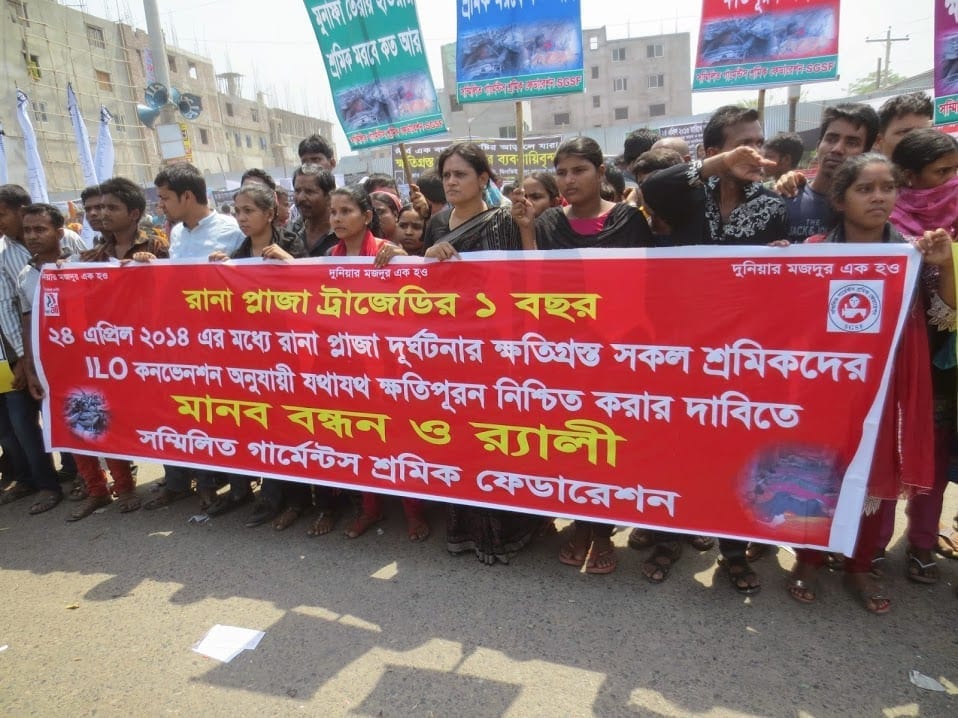
Dec 10, 2014
Each year on December 10, the global community marks International Human Rights Day, anchored in the founding document of the United Nations which asserts that each one of us, everywhere, at all times is entitled to the full range of human rights.
That founding document, the Universal Declaration of Human Rights, also lists “the right to form and to join trade unions” as a basic tenet of human freedom. For many workers around the world, the right to form unions is essential for ensuring the safe working conditions and living wages that are fundamental to human rights.
Two years ago, on November 24, the devastating fire at the Tazreen Fashion Ltd. garment factory in Dhaka, Bangladesh, killed 118 workers, the majority of them young women. Commentators at the time compared the disaster to the 1911 Triangle Shirtwaist Fire in New York, noting that moment in American labor history when young women garment workers began organizing their first unions.
The same phenomenon is taking root in Bangladesh, and for the same reasons. The momentum for union formation was accelerated by the April 2013 Rana Plaza building collapse in Bangladesh, which killed more than 1,100 workers. Following these twin tragedies, workers, primarily women, formed more than 200 new garment unions. Their rapid formation has been driven by the determination of women workers who have experienced how the past 30 years of job creation has not led to their economic or social advancement. They seized the moment to collectively join together to demand that jobs offer more than a meager paycheck.
It has been a nostrum of development economics for the past 20-plus years that merely creating garment-sector jobs was the key to women’s liberation and empowerment. True, approximately 80 percent of workers employed in the Bangladesh’s garment sector are women. True, millions of women now have an independent means of earning an income, which is important to raising women’s status within their family and community.
However, few adherents to this economic analysis have examined whether creating low-wage jobs has truly led to women’s empowerment in a way that is personal, cultural, sustaining or lasting. Rather, many economists and political scientists view Bangladesh and the global garment supply chain through a purely free-market perspective. Through this lens, any wages at all enable women to improve their status. Yet it is much more difficult to acknowledge that the real issue is the global supply chain within which women need to exert their power and genuinely take control of their own destinies inside and outside the home.
Statistical evidence suggests that women toiling at the bottom of the global garment supply chain in Bangladesh do, in fact, experience some social changes in contrast to women working in a subsistence agrarian economy. Research shows that a 10-hour-a-day, six-days-a-week job in the Bangladesh garment industry may improve women workers’ chances to send their children to school and keep them in there longer. However, these arguments are oversold. Women garment workers may or may not control their wages, depending upon gender-based power relations inside their homes. Often, they do not favor women.
Over the past 17 years that I have been involved with the Bangladesh labor movement, I have repeatedly seen how an income does not guarantee independence for a woman garment worker. This anecdotal evidence is backed up by fact. Research suggests that girls age 17 and 18 years old who live near garment factories actually drop out of school at a higher rate than their rural counterparts who go to work in the industry. Further, a 2009 study by the Bangladesh government’s National Bureau of Economic Research documents that non-garment workers’ mothers had a higher level of education than those of garment workers. And farm labor actually pays more than a job at a garment factory in the high-cost, high-inflation environments of Dhaka or Chittagong, according to a recent article in Dhaka’s Financial Express.
So if the one-dimensional argument that earning a wage results in women’s empowerment is fiction, what is the manifestation of real progress for women?
For the answer, I would point to prominent labor activists who have risen from the factory floors and now are organizing among their peers.
Kalpona Akter, Nazma Akter (no relation) and Nomita Nath, for example, all worked as child laborers in garment factories. They have emerged as real leaders, not because they made poverty wages as teens but because they dedicated their lives to uplifting the status of women workers in their society. They have found their power in fighting for jobs that do not starve, maim or kill women. And they know that vulnerable workers find empowerment when they have a union to represent them.
Workers struggle every day on Bangladesh’s factory floors. Women report that physical and verbal abuse are a matter of course. They are threatened when they do not make a quota or when they get pregnant. Or worse. Mira Boashak, president of a local union in Dhaka, was severely beaten in August by several men who had staked out her garment factory.
Despite these challenges, a young organizer told me earlier this year in Dhaka that prior to recent tragedies, her efforts to organize women into unions made her community think she was a troublemaker. Now, she said, she is seen as a champion of women’s rights and looked up to as a leader.
Real women’s empowerment—realized through asserting fundamental human rights.
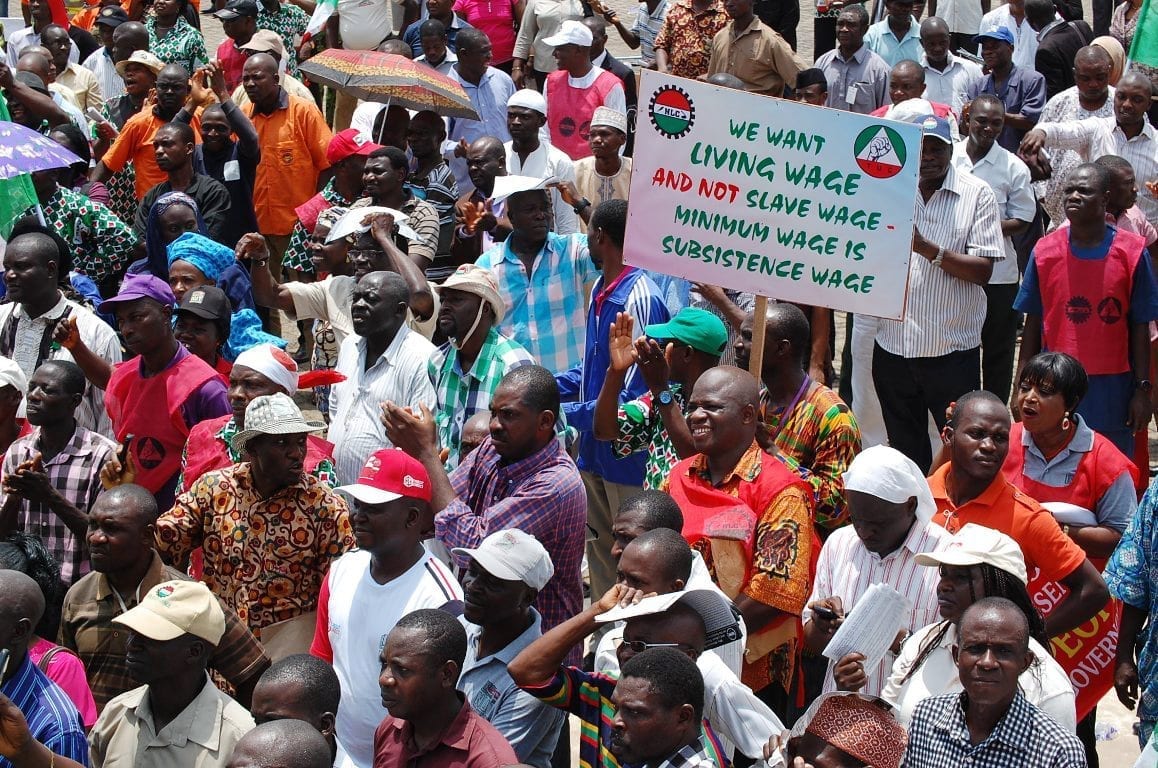
Dec 5, 2014
Inequality around the world has its roots in the labor market, according to this year’s International Labor Organization’s (ILO) “Global Wage Report.” ILO research shows that increased worker productivity–particularly in developed economies, where inequality saw its widest increase—has had little effect on boosting wages. However, some emerging and developing economies, especially those focused on poverty reduction, did see inequality decline through a greater focus on more equitable wage distribution and increased paid (as opposed to self-) employment.
The ILO found that minimum wages contribute effectively to reducing wage inequality—and collective bargaining is “a key instrument for addressing inequality in general and wage inequality in particular.”
Some of the blame for flat wage growth can be laid on the 2008 financial crash, which pushed workers out of jobs and lowered growth rates in many economies. The long-term forces of globalization, technology and the decline of unions also have contributed to the problem.
“Average monthly real wages grew globally by 2 percent in 2013, down from 2.2 percent in 2012,” according to the report. Developing and emerging economies drove this growth: Asia saw a 6 percent increase, Eastern Europe and Central Asia nearly 6 percent and the Middle East saw real wages rise by almost 4 percent. Wages in Latin America and the Caribbean rose by less than 1 percent. Average wages in developed countries grew just 0.4 percent since 2009, despite a 5.3 percent increase in worker productivity.
Inequality fell most in Argentina and Brazil. Workers’ real wages in industrialized countries like Japan, Spain and the United Kingdom are less than they were in 2007.
In almost all countries surveyed, wage gaps remain between women and men, between national and migrant workers and between workers in the formal and informal economy.
According to the ILO, the gender “wage penalty” occurs despite education, experience and productivity, and often as a result of discrimination. Indeed, women’s average wages are between 4 percent and 36 percent less than men’s, and the gap widens for higher-earning women. Closing that gap will require policies to combat discrimination and gender-based stereotypes, and improve maternal, paternal and parental leave, says the report.
The ILO was created in 1919, as part of the Treaty of Versailles that ended World War I, to reflect the belief that universal and lasting peace can be accomplished only if it is based on social justice.
Read a summary of the full Global Wage Report.
Check out the Global Wage Report in Short (video).
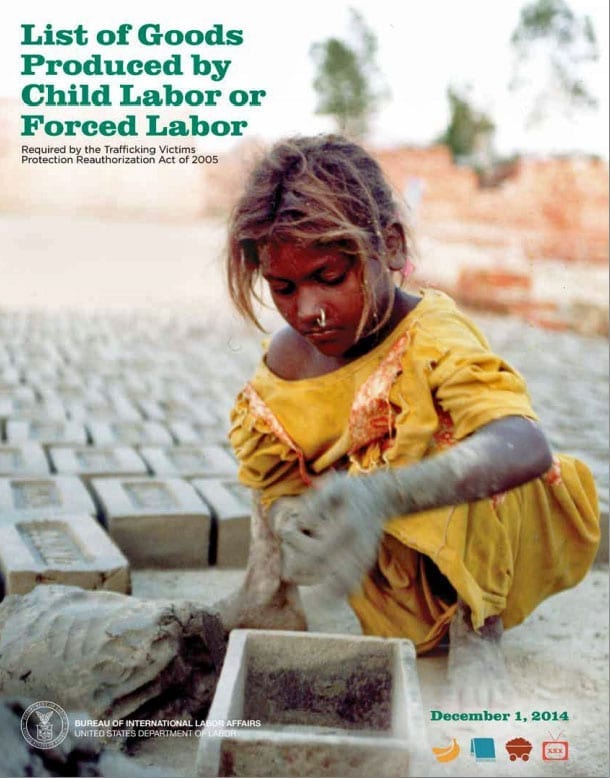
Dec 3, 2014
Cotton production involves the most child labor and forced labor in the world, according to the 2014 “List of Goods Produced by Child Labor or Forced Labor” by the U.S. Labor Department’s Bureau of International Labor Affairs.
Overall, 126 goods are produced annually by child labor and 55 goods produced through forced labor. Most of the goods, like cotton, are found in common items like T-shirts or are among popular foods, such as melons and rice.
The sixth annual report, released this week, added 11 goods produced with children’s labor: garments from Bangladesh; cotton and sugarcane from India; vanilla from Madagascar; fish from Kenya and Yemen; alcoholic beverages, meat, textiles and timber from Cambodia; and palm oil from Malaysia. Electronics from Malaysia made the list for being produced with forced labor.
Uzbekistan, listed among countries using forced labor, including children, for cotton production, routinely requires teachers to leave classrooms and work in the country’s annual cotton harvest, according to a report the Uzbek-German Forum issued last month.
The lengthy list of goods produced with child labor and forced labor includes garments, fish coffee, shrimp and other shellfish, tea, corn, tobacco and peanuts.
See the full list.
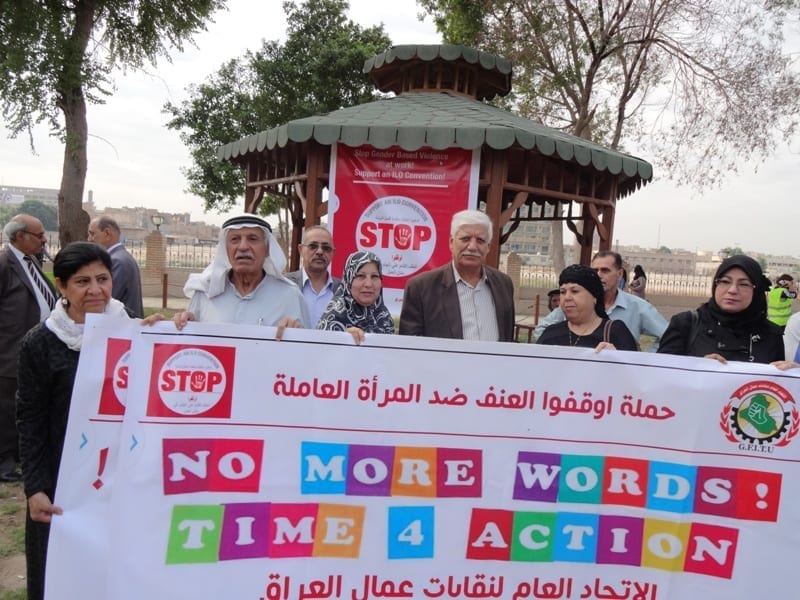
Nov 25, 2014
Violence against women takes many forms, and can happen in the home, in public spaces—and on the job. At the workplace, 35 percent of women worldwide have experienced violence.
This November 25, International Day for the Elimination of Violence against Women, unions around the world are calling for the International Labor Organization (ILO) to pass an global convention on gender-based violence at the workplace. As the International Trade Union Confederation (ITUC) points out, “anyone can be a victim of violence at work, but gender-based violence typifies unequal economic and social power relations between women and men.”
Union leaders and allies are re-submitting a proposal to the ILO Governing Body requiring the ILO to develop an international standard to guide governments and businesses in formulating strong laws and policies to prevent and remedy gender-based violence at work. The ILO Governing Body adjourned this month without considering a similar proposal, and will meet again in March 2015. (You can take action through the International Transport Workers’ Federation’s “End workplace violence against women” campaign.)
This fall, workers in the Middle East and North Africa waged rallies and sit-ins to highlight the issue. The General Federation of Iraq Trade Unions (GFITU) organized a solidarity gathering in late October at Al Qushla Square in Baghdad. Hashmeyya Al Sa’adawi,IndustriALL executive board member and president of the electricity union in Basrah, read the statement of the Arab unionist women network, which expressed concern over increased violence against women.
“We believe that the violence against women issue is a crucial matter that requires immediate action,” she stated
In Morocco, the Democratic Labor Confederation (Confédération Démocratique du Travaille, CDT), organized a sit-in outside Parliament to raise awareness about gender-based violence in the workplace and request support for the convention (watch a video clip of the event).
The Jordanian Federation of the Independent Trade Unions sent a letter to the country’s chambers of commerce and industry and Jordanian government officials urging their support for passage of the gender-based violence standards in the ILO Administration Council.
Women disproportionately work in precarious, low-income and informal economy jobs, where there are few mechanisms to prevent violence and exploitation. Women also are the majority in occupations where workers are more likely to be exposed to violence, such as domestic work and health care, the garment and textile industries and in agriculture. Many women do not report physical, psychological or sexual violence fearing they will be fired or because of cultural norms.
An ILO Convention would further acknowledge that violence against women is a human rights violation, and would be an important step to improving women’s working conditions worldwide and saving the millions of dollars spent every year on health care, lower productivity and sick leave because of violence against women,
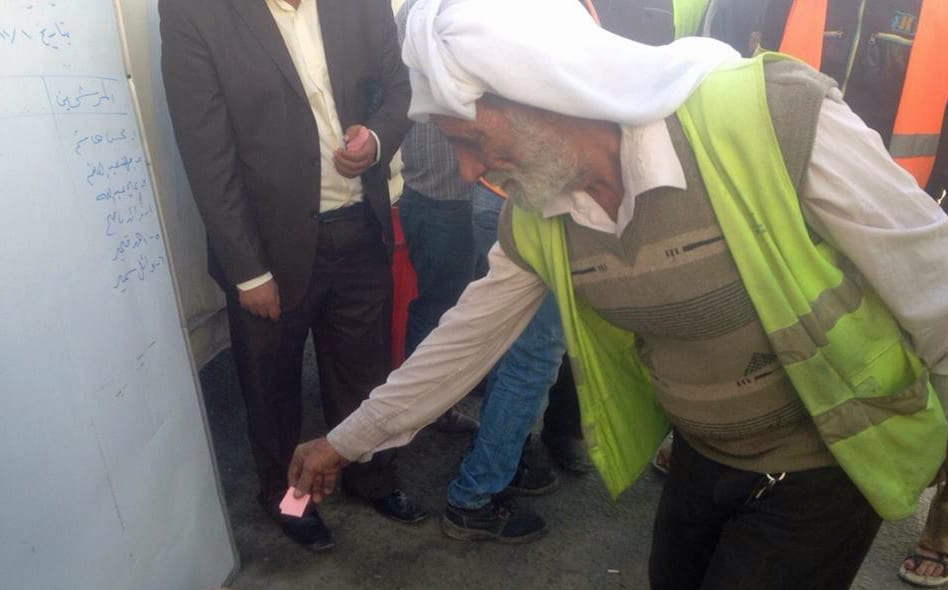
Nov 25, 2014
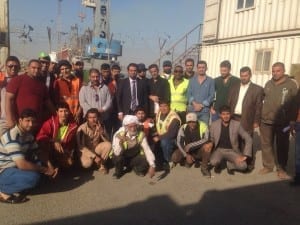 Transport workers at Gulftainer in the Iraqi port of Om Qasr port formed a union committee in November following a three-year organizing effort that involved raising awareness among workers about their rights on the job.
Transport workers at Gulftainer in the Iraqi port of Om Qasr port formed a union committee in November following a three-year organizing effort that involved raising awareness among workers about their rights on the job.
Recognizing they would be better able to negotiate for improved wages and working conditions if they were part of a union, some 119 workers have elected three members to a labor committee that will oversee union elections. The union would be an affiliate of the General Federation of Iraqi Trade Unions (GFITU).
The decision to hold elections signifies a key turning point for Iraqi unions, which generally have waited for management approval to form union committees but now recognize that the freedom to form unions is guaranteed by national and international law. Workers at Gulftainer talked with workers outside the workplace, and also reached out to night shift workers. They held an awareness workshop in Basra and an election preparatory meeting, where they discussed the mechanisms of implementing elections, and the participation of night shift workers in elections.
The newly-elected chairman of the union committee and two other workers at Gulftainer previously took part in a Solidarity Center workshop centered on developing organizing skills among worker representatives at companies funded by International Finance Corporation (IFC) loans.
The Solidarity Center is working with Iraqi trade unions to promote international labor standards at worksites, especially those where companies receive IFC loans, by using the performance standard of IFC institutions to protect worker rights. Iraq’s labor code, created under Saddam Hussein, contains significant gaps in areas of discrimination, forced labor and the right to collective bargaining.
Iraqi unions elsewhere are improving working conditions at IFC-funded workplaces, following Solidarity Center training programs, and are documenting violations and negotiating with management to improve working conditions.
For example, at Erbil Rotana Hotel and at Bazian and Tasluja cement factories in Sulimanyya, workers who took part in the trainings sharpened their organizing skills and went on to negotiate improved work contracts so that workers now receive overtime pay, in accordance with Iraqi labor






